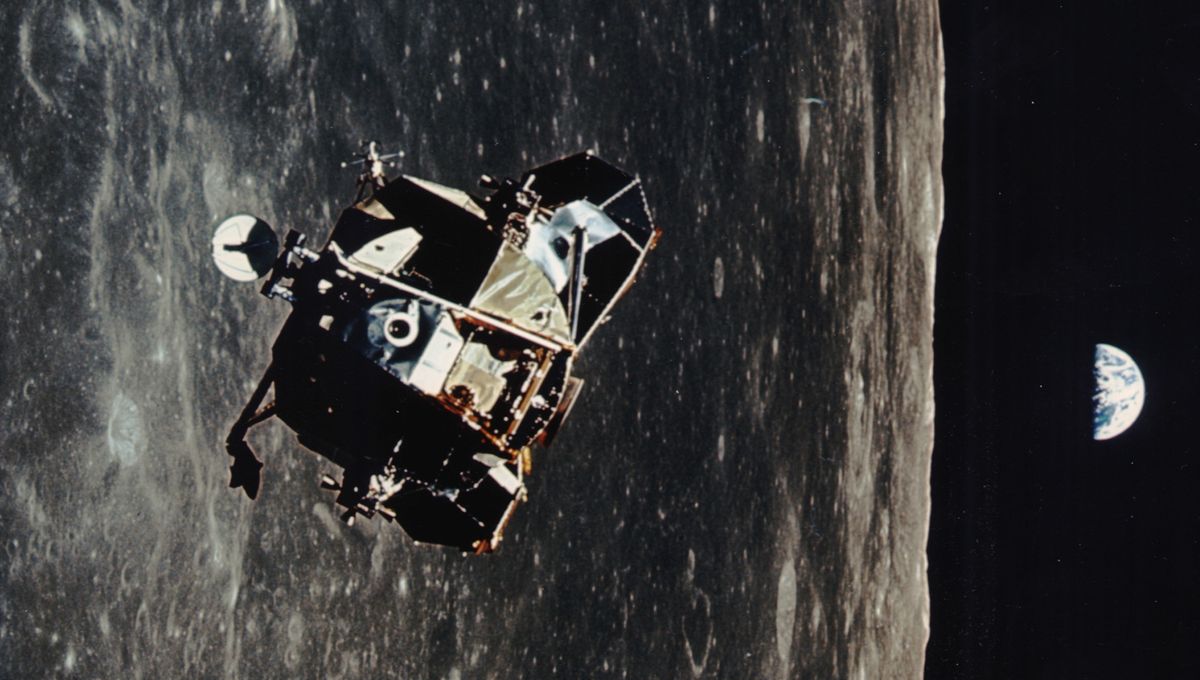
Almost 54 years ago, Apollo 11 astronauts Neil Armstrong and Buzz Aldrin took the Lunar Module Eagle and landed on the Moon. After less than a day on the surface of our natural satellite, they lifted off, to meet up again with Michael Collins in the command module Columbia. Once back on Columbia, the Eagle was abandoned, expected to come crashing down on the Moon. But maybe it did not.
The Lunar Excursion Modules, or LEMs, of all the successful Apollo missions that followed were sent to crash land on the surface of the Moon – but not Eagle. Independent researcher James Meador has done calculations suggesting that it might still be in orbit. And in follow-up work, he suggests how we might find it.
Back in 2021, Meador published a paper in the journal Planetary and Space Science where he discussed the possible fate of the Eagle. Crucial to this work was NASA’s GRAIL mission, which has allowed us to create the most accurate map of the Moon to date, including details about massive structures buried underneath the lunar surface. Armed with that, Meador was able to start working out how the trajectory of Eagle might have changed since July 1969.
Using NASA software like the General Mission Analysis Tool and original Apollo records, Meador worked out the motion of the LEM. The radiation pressure from sunlight, which is used in engine-less propulsion systems like solar sails, was also accounted for, as it would have pushed the spacecraft around. Neither the weird lunar gravity nor the pressure from the Sun appeared to be enough, though.
In simulations running across the 51 years between 1969 and 2020, the Eagle doesn’t ever drop below 15 kilometers (9 miles) from the surface of the Moon. This is still a low value, but moving fast enough it would have allowed it to stay in orbit. There’s no atmosphere on the Moon to slow it down.
“These results indicate that the ‘Eagle’ might remain in lunar orbit today. It must be remembered that the Lunar Modules were designed for 10-day missions, and little consideration was given to long-term reliability. For this reason, fuel leaks might have resulted in propulsive events or even complete destruction at any time after the craft was jettisoned,” Meader wrote in the paper.
Eagle is probably one of the most important space artifacts, and if it did not explode and is still out there, it might be possible to find it. In follow-up research, Meader discusses how radar observations could be used to look at the Moon, a technique previously employed for the rediscovery of India’s Chandarayaan-1 spacecraft. The gap between losing that probe and finding it again was less than eight years. Eagle might be more difficult, but Meader is optimistic about it. And the effort in finding it would certainly be worth the work.
If this sounds easy, maybe consider the Apollo 10 LEM. That did not go to the Moon, and after testing it was sent flying around the Sun.
[H/T: Discover Magazine]
Source Link: Apollo 11’s Eagle Might Still Be Orbiting Around The Moon